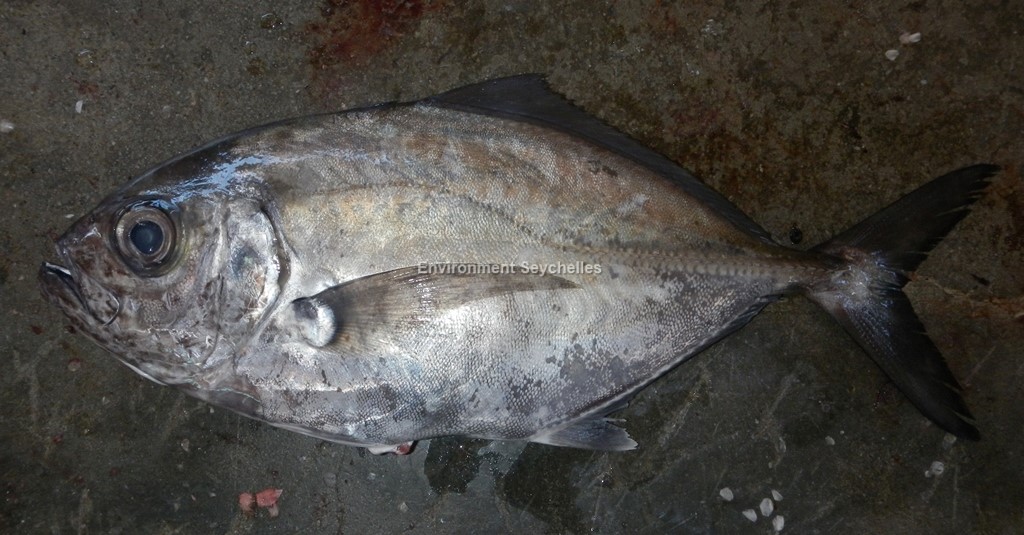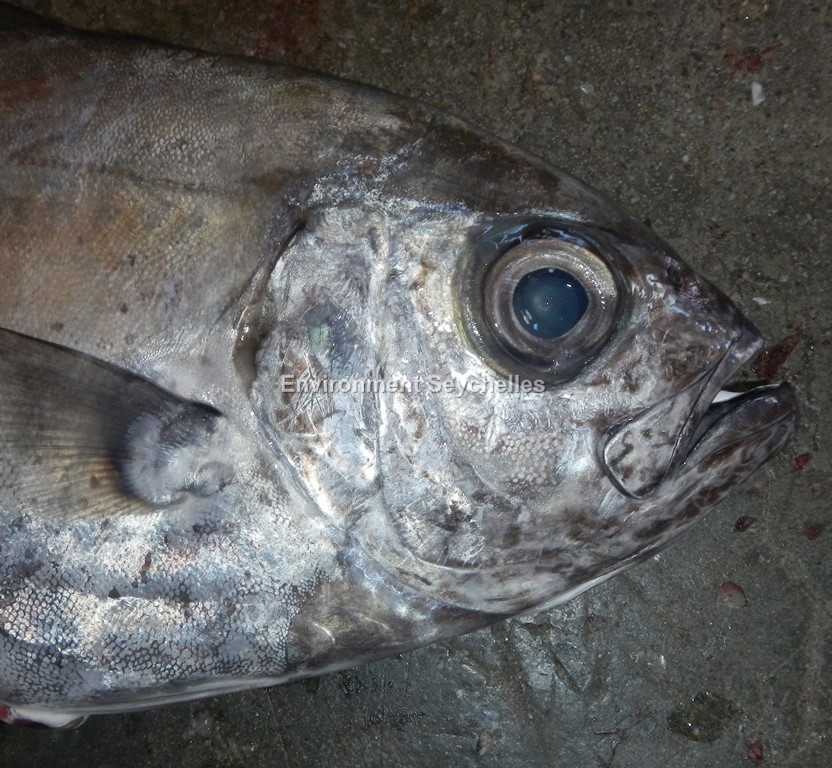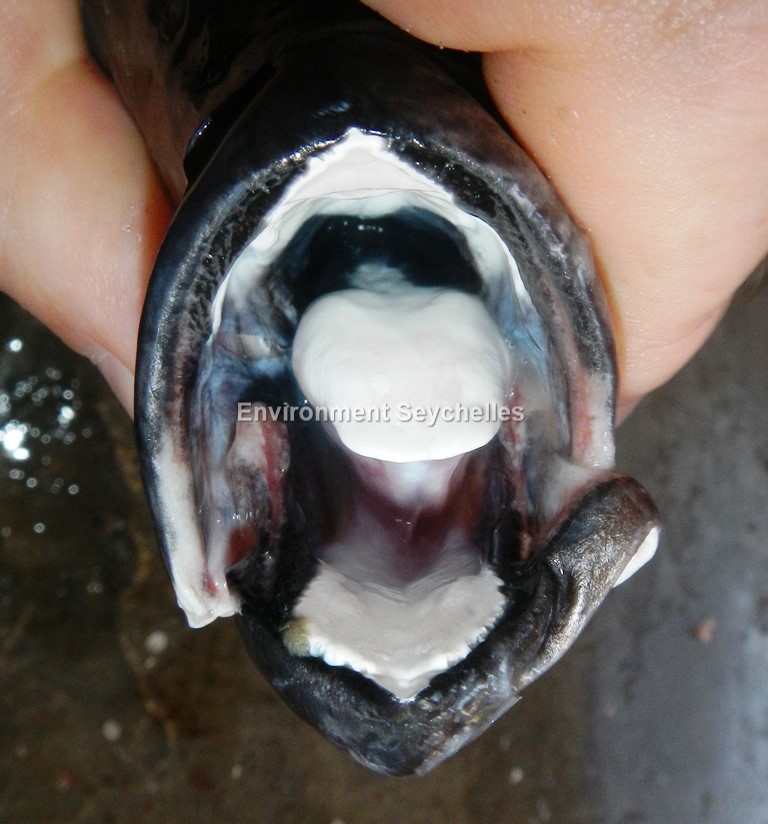Description:
Dorsal spines: 9 (8+1); Dorsal rays: 25-30; Anal spines: 3; Anal rays: 19-22.
Body oblong and compressed. Dorsal profile strongly convex, ventral profile slightly convex to anus then nearly straight to origin of anal fin. Snout broadly rounded. Upper
jaw extending posteriorly to below anterior margin of eye to middle of eye. Teeth in both jaws small, pointed and usually recurved, in a narrow band, an irregular row, or a
single row, becoming uniserial with age. Posterior 2 or 3 spines of 1st dorsal fin embedded and not apparent with growth. Anal fin with 2 detached spines embedded and not
apparent in all but very young. Pelvic fins very long in young but becoming relatively shorter with age. Curved part of lateral line with 48 to 66 scales and straight part
of lateral line with 23 to 40 scutes. Breast without scales ventrally to origin of pelvic fins separated from scaleless base of pectoral fin by a broad band of scales.
Colour. Tongue, roof and floor of mouth white, the rest blue-black. Head dusky to black, with a large, diffuse black opercular blotch. Body dusky to black dorsally, lighter
below. Small specimens may exhibit 6 dark bars on flanks. Second dorsal and anal fins hyaline dusky to black. The anal commonly, and the second dorsal occasionally with
pale tips to the falcate lobe and the fin margin.
Size:
Maturity: Lm unknown. Range unknown. Max Length: 58cm TL, commonly to 35cm TL.
Habitat and Ecology:
A benthic-pelagic species inhabiting shelf waters along continental coasts and around islands (depth 50-300m). This species is mainly nocturnal and may occur singly or in
small schools.
Fishery Status:
This species is not protected or subject to fishery regulations. It is caught in the hand line fishery, its relative abundance is uncertain due to its similarity to other
species.
Notes:
References:
Fischer, W. & G. Bianchi (eds), (1984). FAO species identification sheets for fishery purposes. Western Indian Ocean; (Fishing Area 51). Prepared and printed with the
support of the Danish International Development Agency (DANIDA). Rome, Food and Agricultural Organization of the United Nations, vols 1-6.
Froese, R. & D. Pauly. (Eds.) (2020). FishBase. https://www.fishbase.se/summary/Uraspis-helvola.html (24/05/20).
Smith-Vaniz, W.F. & Williams, I. (2015). Uraspis helvola. The IUCN Red List 2015: https://dx.doi.org/10.2305/IUCN.UK.2015-4.RLTS.T50902942A50912682.en. (24/05/20).
Citation:
Nevill, J.E.G. (2020). Uraspis helvola, Whitetongue jack. Seychelles Seatizens. www.seatizens.sc. https://seatizens.sc/species/uraspis-helvola-forster-1801/ (edited 28/06/22).




There are no comments